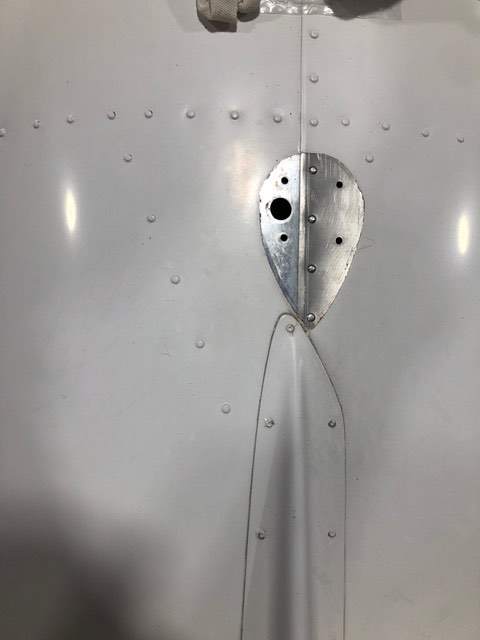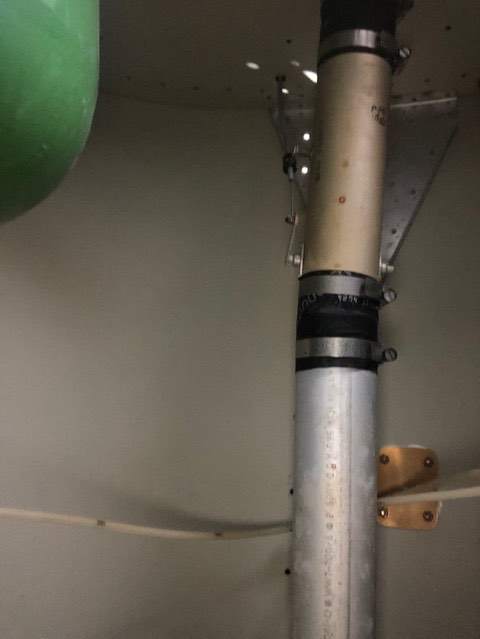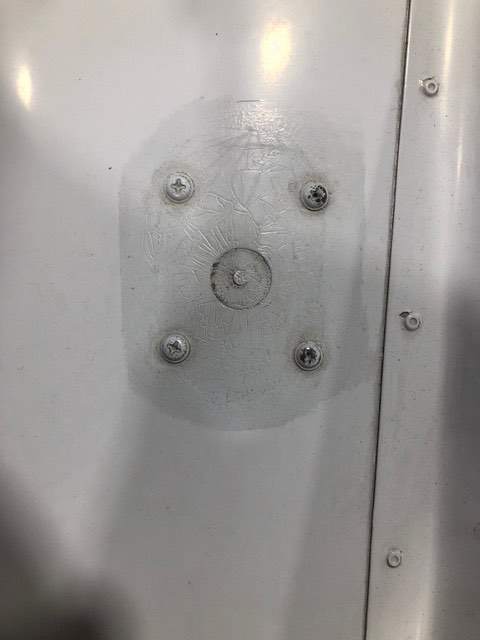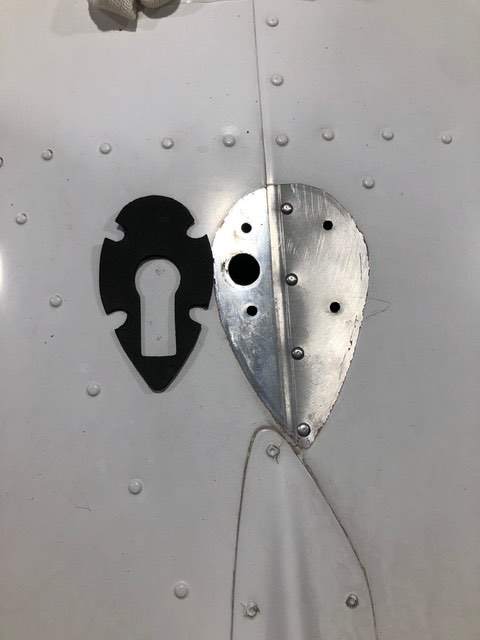
Aerodon
Supporter-
Posts
1,301 -
Joined
-
Last visited
-
Days Won
1
Content Type
Profiles
Forums
Blogs
Gallery
Downloads
Events
Store
Everything posted by Aerodon
-
It's not about whether the mechanic can ground the plane, if something is found that is no longer airworthy, I would ground the plane. Ignorance is bliss, but once something is discovered, the owner has an obligation to fix before further flight, I would just like to deal with it at one of the local airports. Aerodon
-
Reminds me of the flying school that had a completion for students to find the 'pre arranged' defects during a preflight. Someone always found a few more, sometimes grounding the aircraft for weeks. I would be reluctant to fly my plane somewhere to do a PPI. Something could come up that could ground the airplane away from home. At least if it comes up at home I can deal with it locally. Aerodon
-
So my question - can an orphan STC be transferred from one airplane to another, without permission from the original STC owner because they are no longer in business? Gotta be an M20P owner that could use the STC from this plane if and when it gets parted out? Don
-
As a hangar developer, owner, lessor, seller, operator etc. (hangar pimp?) I have some sympathy for the City. I have had incidents - fire, runaway planes, flipped plane, fuel spill and more. I have tenants with $$$million dollar airplanes and they do not take kindly to some of the things that others get up to putting their plane at risk. When I insure the buildings and liability, I get asked to declare the use. Lowest cost is 'storage', and then it starts going up. It really is not very feasible to have a maintenance shop in one row of hangars and then try to keep the insurance premiums down for all the others. So I have 'private storage hangars' and 'commercial hangars' in different buildings, and I expect people to FIFO. We've seen the u-tube video of the mechanic without insurance starting the plane that runs away into another plane. Who do you think that insurance company sues? So I am having to get pretty hard-assed about it to protect my butt. A little bit of maintenance leads to a lot of maintenance, and next think you have a fire, insurance claim, and a counter claim. So my rules are 'allowable owner maintenance in the hangar', no refuelling, no lithium batteries, no welding, no spray painting etc. Then yes, you can get your annual inspection done, proving the service provider has a business license to operate at our airport and has $2m liability insurance. Aerodon
-
factory delivered weight and balance/equipment list
Aerodon replied to Seth Miller's topic in Vintage Mooneys (pre-J models)
My 1980 Cessna 172 has a factory 'standard' empty weight plus all selected options to arrive at the first W&B. My 1987 Mooney M20K has a similar detailed list of options and weights, but the first W&B is from weighing the airplane. I would find a similar vintage Mooney and build up a proper spreadsheet and then weight the plane. Do enough detail that the spreadsheet can double as an 'Equipment List' and that when stuff is removed and replaced, the next guy can do an amendment quickly and accurately. Aerodon -
http://www.aero-news.net/index.cfm?do=main.textpost&id=aab2be79-b528-45de-be04-aafcaa8543b6 The nearly new M600 is probably a $3m plane, and the remains are on the salvage circuit now, so the owner is probably getting a new one. If you read the NTSB report, the P51 pilot's friends threw him under the bus by saying he always taxied too fast and never did S turns. The M600 insurance company is probably going to pay the owner quite quickly, but they are not in the habit of stopping there. Let's just imagine this P51 pilot had no liability insurance (or not enough) as a lot of warbird owners tend to do. I think he needs to worry about a claim. Aerodon
-
Good catch, that is probably not the correct lower spindle. Slight chance they may have upgraded. I have my old spindles handy will take a picture. Aerodon
-
Yes I did, I found the parts of a M20R. Had to buy more than I wanted, but have successfully sold most of the remaining components. Aerodon
-
I think there is confusion around the definition of inner doors. An older M20K has 2 gear doors on each side, outboard on the wing and one on the gear leg. So on an older M20K terms, the lower door is the inner door. The 252 and Encore have an inboard gear door attached to the wing to close the remaining gap when the gear is retracted. This needs to be replace if doing the Encore mod, but if its not there in the first place..... Attached is an image of all 3 doors - showing the bulge that covers the double puck brakes. Also a picture of the inner door open - I think the earlier M20K's have a fixed panel that mostly closes the hole. Aerodon
-
Not true, they are the same except for the location of the mounting holes for the brakes. I have heard the suggestion that you can just re-drill the mounting holes to accommodate the aft mounted calipers, but that is below my standard. And the lower gear legs are heat treated, so a well known welding shop declined to modify my standard gear legs. I think it is a worthwhile mod for Erik to do to his 3200lb Rocket. Aerodon
-
The Encore brakes are the Bravo and on brakes, spindles, master's. My Encore mod parts came from a M20M, part numbers matched the Encore parts list. Rumour has it that when Mooney produced the Encore in 1996, they just took the then current brake system, aileron, rudder, elevator balance weights and used it on the Encore. The brakes were probably necessary for the higher gross weight, but I don't think the balance weights are? No change in V speeds. There is also a SB that applies to the inner gear doors to add a door stop to the M20M's and on. Mooney didn't apply this mod to the Encore, but given the problems that some have had with the inner gear doors links, it seems like a smart idea. The 252 is still an M20K, so it is less of a major modification than say asking someone to sign out installing M20M into M20K parts. Also, there is a drawing package available, so there is some solid data to use in a 337. But don't underestimate the cost of doing all of this. There is a lot of labor and expensive parts. Yes BAS have a set of gear legs, I tried asking if they would take the spindles off and they declined. But the whole gear legs are less than factory spindles. Aerodon
-
Erik, The double puck caliber is mounted on the back of the wheel, so the mounting ring is 'mirrored' on the lower gear leg (spindle). These are expensive, but can be found used. Then the middle and inner gear doors don't fit. You might not have the inner door? And I guess they change the master cylinder to change the stroke or pressure to the calibers. Don
-
The ‘Encore’ mod to a 252 installs ‘Bravo’ double cylinder calipers to replace the single cylinder calipers and that probably comes close to doubling the braking friction. there are quite a few changes - new master cylinders, new lower gear legs and new doors. New disks, new calipers. Probably $10k in parts now, but used ones are available from time to time. No STC that I am aware of, but you may persuade someone to get field approval? Aerodon
-
@danb Do yourself a favour and buy a 'new' set of pedals from baspartsales. It's less work to change and then you have a set of pedals with extensions to keep / sell. Aerodon
-
I have a spare USB box making the rounds for EDM700/800 owners just wanting to do the occasional 'download all data'. $50 plus shipping to the next guy. Also have a JPI RPM and FF 'simulator' - plug this in to generate a signal to isolate transducer, wiring or instrument faults. And I still do the occasional EDM700 to 800, 830, 900, 930 trade in program. Contact me at supercub180@gmail.com
-
Panel and Avionics Upgrade is Scheduled
Aerodon replied to Pinecone's topic in Avionics/Panel Discussion
OK, are they smart enough to build the whole stack on the bench and then have you deliver the plane when ready to install? I know a lot of avionics shops resist this idea, but I have seen shops on the west coast that do this, and it achieves a number of time consuming tasks: 1) waiting for all parts to arrive 2) all the pre planning, drawings, thinking and wiring required. 3) making sure that they are ready before you start the downtime. 4) making sure there isn't some other higher priority or lagging job in the hangar. One of the advantages of going 'all in' on mostly new avionics, is that there are almost no interfaces left to deal with in the plane. The M20K already has a nice CPC connector for all avionics power and it's not hard to install a good grounding block. Its not hard to measure the lengths of pigtails tot he various locations (I already have a spreadsheet). It can be done, I know of one shop that schedules 2 weeks downtime for an install like this. Another shop that can ship entire panels ready to drop in place. Aerodon -
Western Aircraft Propeller (Sandy, OR)
Aerodon replied to alexthe5th's topic in West Coast Mooney Club
Is this the same shop that was located at Troutdale? My experience with my right Seneca propeller was shockingly bad, and I'm a pretty savvy buyer. Why not try AC Propeller - they are walking distance from KBFI. My experience with my left Seneca propeller was just perfect. Make sure you set your expectations correctly. Hubs can fail because of corrosion. Blades can fail because of diameter and chord width. If you end up replacing 2 out of 3 of these, you may as well buy a new prop. Aerodon -
Priming is nice, but a lot of work. And without a proper etch and alodyne (new equivalent), you will have adhesion problems. And primer is good at sticking, not so good at corrosion protection. A lot of research was done on the unexpected corrosion problems of space shuttle, I learned a lot from that reporting. Super Koropon is a really nice thin primer, but needs to be covered with a clear coat. My 1993 supercub had primed and clear coated parts all over the place, they must have read the same report. And ground tabs for everything all over the place too. My current preferred option is to get set up for a good etch, alodyne and wash. That way new parts are better than 95% of the old parts and will never be a problem again. Aerodon
-
@shiver. I am going to replace the VHF antenna just forward of the dorsal fin. There is a proper double underneath (look for the triangular rivet pattern). My current thinking is to plug the old holes with rivers and a 'button' and start again alongside. No easy way of using the old holes. I am installing a traffic antenna just forward of the other VHF antenna using the Moonye instructions for a doubler braced against the tubular structure. Then moving that VHF to the belly. Aerodon
-
I always clear customs as close to the border as possible (either direction) - they are not very understanding when it comes to headwinds, ATC delays and a diversion to another customs airport is almost guaranteed to throw the average customs official into a tail spin. And having to divert to a non customs airport is likely to get you arrested nowadays. I can think of at least 2 weather related fatal accidents where I am pretty sure the decision to press on was the lack of a customs airport. Coming to Canada from WA state - CYYJ (Victoria) has a full time customs office and they may or may not come out to the Shell Aerocenter. CZBB and CYXX are also pretty good, but I think Victoria might be my first choice if I were heading north. Be sure to read up the Canada Flight Supplement (CFS) before you arrive - you are expected to know the VFR arrival and departure procedures. Don
-
Some options - I bought a Comant CI2580-200 for a combine VHF and GPS antenna to save on installation costs and to reduce the number of antennas I need A used CI2480 might be acceptable for a GDL82 and used units are often more available. And if you already have a GNS/GTN, maybe an antenna splitter would be an option? Aerodon
-
On my K, the boost pump switch is a switch, not a breaker switch. It has an inline fuse from the auxiliary bus bar. There are probably multiple configurations, hence the different part numbers. You really need a wiring diagram specific for your serial number to work on anything electric. Apart from being hard to print (or view on a computer), the Mooney drawings for that vintage are very complete and accurate. I have spare switches and breaker switches, but you need to be a little closer to identifying it before I go scratching in my boxes. Aerodon
-
**FOUND** - Inspection Cover Assembly 210113-1
Aerodon replied to pilot_jb's topic in Avionics / Parts Classifieds
I'm looking to replace some panels too (corrosion, unnecessary holes etc.). I was surprised how many part numbers there are for the wing panel, and that they change by serial number. That inboard one is 'double' and installed with structural screws. Aerodon -
Posted recently on Beechtalk (thanks Noam): 1) 2020 I declared an emergency in my Cessna 414 night time climbing through 2000' lost oil press on left engine. There was ZERO contact from the FAA or anyone. No bills, no paperwork. NOTHING. 2) 2021 in my citation elevator trim frozen in flight, declared emergency FSDO called me 2 weeks later - super friendly. It went something like this: FSDO: "Hey Noam, you declared an emergency?" Me: "Yes, my elevator trim froze". FSDO: "Did you find out with your mechanic what the reason was later?" Me: "Yes - we needed fresh lube on the trim actuator" FSDO: "okidokie, just checking in. Fly safe brother!" Me: "Cheers!" That was the END of that. No logbooks, no medical, no paperwork, NOTHING. Just a quick friendly chat.








